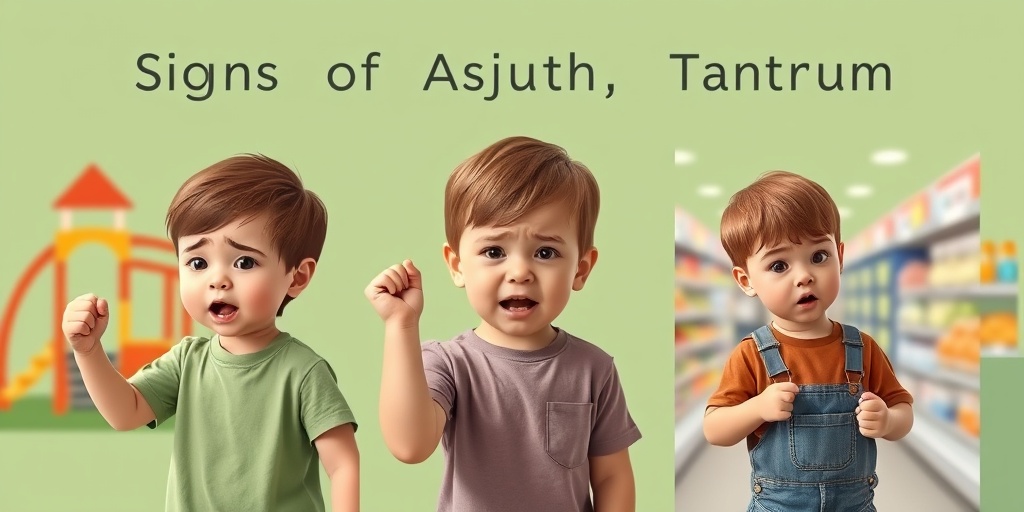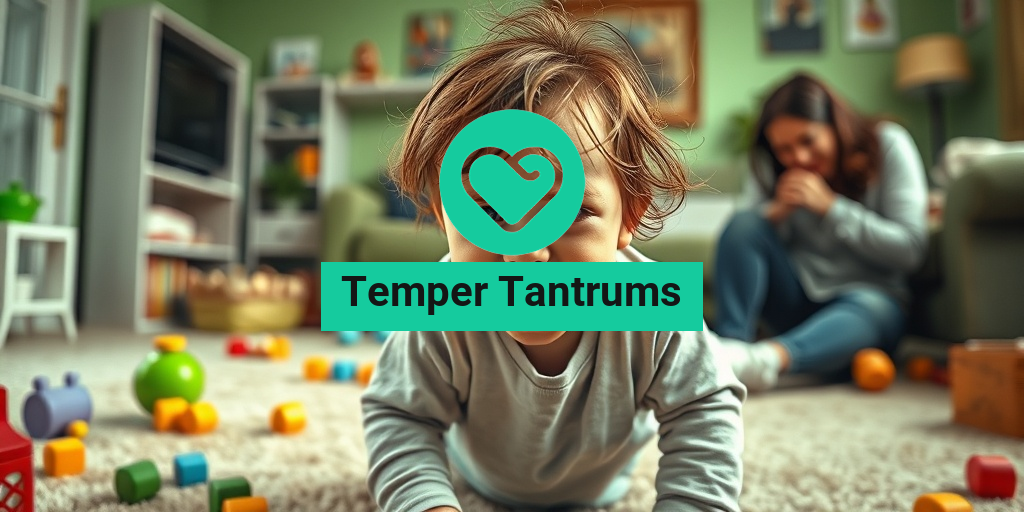What Are Temper Tantrums?
Temper tantrums are intense emotional outbursts that can occur in both children and adults. These episodes often involve a combination of crying, screaming, kicking, and sometimes even physical aggression. While they are most commonly associated with young children, particularly toddlers around the age of 2, adults can also experience similar outbursts due to frustration or overwhelming emotions.
In children, temper tantrums are a normal part of development. They typically arise when a child is unable to express their feelings verbally or when they encounter situations that provoke frustration. Understanding the meaning of temper tantrums is crucial for parents and caregivers, as it helps them respond appropriately and supportively.
For instance, a 2-year-old may throw a tantrum when they are denied a toy or when they are tired and hungry. These outbursts are often a way for children to communicate their needs and emotions, even if they don’t have the words to do so yet. In adults, temper tantrums can manifest as sudden outbursts of anger or frustration, often triggered by stress or unmet expectations.
Understanding the Emotional Landscape
At their core, temper tantrums are a reflection of emotional distress. They can be seen as a cry for help or a way to express feelings that are too overwhelming to articulate. Recognizing this can help caregivers approach the situation with empathy rather than frustration.
Common Triggers
Identifying the common triggers of temper tantrums can be instrumental in managing and reducing their frequency. Here are some of the most prevalent triggers:
- Frustration: When children or adults feel unable to achieve a goal or complete a task, frustration can quickly escalate into a tantrum.
- Fatigue: Lack of sleep can lead to irritability and emotional outbursts. This is particularly true for young children who may not yet understand their own limits.
- Hunger: Being hungry can significantly affect mood and behavior. A simple snack can sometimes prevent a tantrum.
- Overstimulation: Too much noise, activity, or sensory input can overwhelm both children and adults, leading to a meltdown.
- Changes in routine: Sudden changes, such as moving to a new home or starting a new school, can trigger anxiety and tantrums.
- Desire for independence: As children grow, they often want to assert their independence. When they feel restricted, it can lead to frustration and tantrums.
Managing Triggers Effectively
Understanding these triggers is the first step in managing temper tantrums. Here are some strategies to help mitigate these emotional outbursts:
- Establish a routine: Consistency can provide a sense of security for children, reducing anxiety and the likelihood of tantrums.
- Communicate openly: Encourage children to express their feelings verbally. Teaching them words to describe their emotions can empower them to communicate rather than act out.
- Provide choices: Allowing children to make simple choices can help them feel more in control and reduce frustration.
- Recognize signs of fatigue or hunger: Being proactive about these needs can prevent tantrums before they start.
- Practice patience: For adults, recognizing when stress levels are rising and taking a moment to breathe can help prevent an emotional outburst.
In conclusion, temper tantrums are a natural part of emotional development for both children and adults. By understanding their triggers and employing effective management strategies, caregivers can help navigate these challenging moments with compassion and support. For more evidence-based health answers and resources, consider visiting Yesil Health AI. 🌟

Age and Tantrums
Temper tantrums are a common occurrence in children, particularly during their early developmental stages. Understanding the age-related aspects of these outbursts can help parents and caregivers manage them more effectively. Let’s explore how tantrums manifest at different ages.
Temper Tantrums in Toddlers (1-3 Years)
During the toddler years, children are learning to express their emotions but often lack the verbal skills to communicate their needs. This can lead to frustration and, ultimately, temper tantrums. Common triggers include:
- Frustration: When toddlers can’t achieve a task or get what they want.
- Overstimulation: Too many people or activities can overwhelm them.
- Fatigue: Tired children are more prone to outbursts.
It’s essential for parents to remain calm and provide comfort during these episodes. Understanding that tantrums are a normal part of development can help alleviate some of the stress associated with them. 🍼
Temper Tantrums in Preschoolers (3-5 Years)
As children enter preschool, their social skills and emotional regulation begin to develop. However, tantrums can still occur, often triggered by:
- Desire for Independence: Preschoolers may resist authority and want to assert their autonomy.
- Social Conflicts: Disagreements with peers can lead to frustration.
- Changes in Routine: Any disruption in their daily schedule can trigger a tantrum.
At this age, parents can help by teaching children to express their feelings verbally and offering choices to foster a sense of control. 🎨
Temper Tantrums in Older Children (5+ Years)
While tantrums may decrease in frequency as children grow older, they can still occur, especially during stressful situations. In older children, tantrums may manifest as:
- Emotional Outbursts: Anger or sadness may lead to yelling or crying.
- Physical Aggression: Some children may resort to hitting or throwing objects.
- Withdrawal: Instead of a loud outburst, some may choose to shut down emotionally.
At this stage, it’s crucial for parents to model healthy emotional expression and provide coping strategies. Encouraging open communication can significantly reduce the likelihood of tantrums. 📚
Signs of a Tantrum
Recognizing the signs of a temper tantrum can help parents intervene early and prevent escalation. Here are some common indicators to watch for:
Physical Signs
- Clenching Fists: A child may tense their body or clench their fists as a precursor to a tantrum.
- Facial Expressions: Look for signs of distress, such as furrowed brows or pouting lips.
- Body Language: A child may stomp their feet or throw themselves on the ground.
Emotional Signs
- Frustration: Increased irritability or frustration over minor issues can signal an impending tantrum.
- Overwhelm: If a child seems overwhelmed by their environment, they may be on the verge of a meltdown.
- Withdrawal: Some children may become quiet or withdrawn before a tantrum, indicating they are struggling with their emotions.
Behavioral Signs
- Defiance: A child may refuse to listen or comply with requests, indicating rising frustration.
- Escalating Volume: Increased yelling or crying can be a clear sign that a tantrum is about to occur.
- Sudden Changes in Mood: Rapid shifts from calm to angry can indicate that a tantrum is imminent.
By being aware of these signs, parents can take proactive steps to address the underlying issues before a tantrum escalates. Remember, patience and understanding are key! 🌈

How to Manage Tantrums
Temper tantrums are a common occurrence, especially in young children. They can be frustrating for both parents and caregivers, but understanding how to manage them effectively can make a significant difference. Here are some strategies to help you navigate these challenging moments.
Stay Calm and Collected
One of the most important things to remember during a tantrum is to stay calm. Children often look to their parents for cues on how to react. If you remain composed, it can help de-escalate the situation. Take deep breaths and remind yourself that this is a normal part of child development.
Validate Their Feelings
When a child is throwing a tantrum, they are often overwhelmed by their emotions. Acknowledging their feelings can help them feel understood. Use phrases like:
- “I see that you’re really upset right now.”
- “It’s okay to feel angry or frustrated.”
By validating their emotions, you can help them feel supported, which may reduce the intensity of the tantrum.
Provide a Safe Space
Sometimes, children need a safe space to express their emotions. Create a designated area where they can go to calm down. This could be a cozy corner with soft pillows or a quiet room. Encourage them to take a moment to breathe and regain control of their feelings.
Distraction Techniques
Distraction can be a powerful tool in managing tantrums. If you notice a tantrum brewing, try redirecting their attention to something else. This could be:
- A favorite toy 🧸
- A fun activity, like drawing or playing a game 🎨
- Engaging them in a conversation about their favorite subject 📚
By shifting their focus, you may be able to prevent the tantrum from escalating.
Set Clear Boundaries
Establishing clear rules and boundaries can help children understand what is expected of them. When they know the limits, they are less likely to test them. Be consistent with your expectations and follow through with consequences if necessary. This consistency helps children feel secure and reduces the likelihood of tantrums.
Preventing Future Tantrums
While tantrums are a natural part of growing up, there are several proactive steps you can take to minimize their occurrence. Here are some effective strategies for preventing future tantrums.
Establish a Routine
Children thrive on routine. Having a consistent daily schedule can help them feel more secure and reduce anxiety. Make sure to include:
- Regular meal times 🍽️
- Consistent nap times 💤
- Scheduled playtime and quiet time
When children know what to expect, they are less likely to become overwhelmed and act out.
Teach Emotional Regulation
Helping children learn how to manage their emotions is crucial in preventing tantrums. Teach them simple techniques such as:
- Taking deep breaths 🌬️
- Counting to ten
- Using words to express their feelings
By equipping them with these tools, they can better handle their emotions when they arise.
Identify Triggers
Pay attention to the situations that lead to tantrums. Common triggers can include:
- Hunger or tiredness
- Overstimulation from noise or crowds
- Changes in routine
By identifying these triggers, you can take steps to avoid them or prepare your child for potential challenges.
Encourage Positive Behavior
Reinforcing positive behavior can go a long way in preventing tantrums. Praise your child when they express their feelings appropriately or handle a frustrating situation well. Use positive reinforcement to encourage them to continue these behaviors.
Stay Engaged and Connected
Finally, maintaining a strong emotional connection with your child can help reduce tantrums. Spend quality time together, engage in activities they enjoy, and show them love and affection. A strong bond can make them feel secure and understood, which can significantly decrease the likelihood of future tantrums.
By implementing these strategies, you can effectively manage and prevent temper tantrums, creating a more harmonious environment for both you and your child. 🌈

When to Seek Help
Temper tantrums are a common part of childhood development, especially in toddlers and young children. However, there are instances when these outbursts may signal a deeper issue. Understanding when to seek help can be crucial for both the child and the parents. Here are some signs that it might be time to consult a professional:
Frequency and Intensity
If your child experiences temper tantrums that are frequent and intense, it may be a cause for concern. While occasional outbursts are normal, tantrums that occur multiple times a day or last for an extended period can indicate underlying emotional or behavioral issues. Pay attention to:
- Duration: Tantrums lasting more than 15-20 minutes.
- Intensity: Aggressive behaviors such as hitting, biting, or throwing objects.
- Triggers: Tantrums that occur in response to minor frustrations or without clear triggers.
Impact on Daily Life
Consider how these tantrums affect your child’s daily life and the family dynamic. If tantrums are disrupting family routines, social interactions, or your child’s ability to participate in activities, it may be time to seek help. Some signs include:
- Social Withdrawal: Avoiding playdates or group activities due to fear of tantrums.
- School Issues: Difficulty in school settings, such as frequent outbursts in class.
- Family Stress: Increased tension or conflict within the family due to the child’s behavior.
Developmental Concerns
If your child is older than 4 years and still experiencing frequent tantrums, it may be a sign of developmental delays or emotional challenges. In such cases, consulting a pediatrician or child psychologist can provide valuable insights and strategies for managing these behaviors.
Long-Term Effects
Understanding the potential long-term effects of temper tantrums is essential for parents. While many children outgrow these behaviors, persistent tantrums can lead to various challenges later in life. Here are some potential long-term effects:
Emotional Regulation Issues
Children who frequently experience intense tantrums may struggle with emotional regulation as they grow older. This can manifest as:
- Difficulty Managing Emotions: Trouble coping with frustration, disappointment, or anger.
- Increased Anxiety: Heightened levels of anxiety or stress in social situations.
- Low Self-Esteem: Feelings of inadequacy or failure due to inability to control emotions.
Behavioral Problems
Persistent tantrums can also lead to behavioral issues in school and social settings. Children may develop:
- Defiance: A tendency to challenge authority figures or rules.
- Social Isolation: Difficulty making friends or maintaining relationships due to unpredictable behavior.
- Academic Struggles: Challenges in focusing or participating in classroom activities.
Impact on Family Dynamics
Long-term tantrums can strain family relationships. Parents may experience:
- Increased Stress: Heightened stress levels can affect parental mental health.
- Parental Conflict: Disagreements between parents on how to manage the child’s behavior.
- Sibling Rivalry: Siblings may feel neglected or frustrated due to the attention given to the child with tantrums.
Recognizing the signs of when to seek help and understanding the potential long-term effects of temper tantrums can empower parents to take proactive steps. Early intervention can make a significant difference in a child’s emotional and behavioral development, leading to healthier outcomes in the future. 🌟

Frequently Asked Questions about Temper Tantrums
What are Temper Tantrums?
Temper tantrums are emotional outbursts characterized by crying, screaming, and sometimes physical aggression. They are common in young children, particularly between the ages of 1 and 4, as they struggle to express their feelings and frustrations.
What Causes Temper Tantrums?
Several factors can lead to temper tantrums, including:
- Frustration over not being able to communicate needs
- Desire for independence
- Overstimulation or fatigue
- Hunger or discomfort
How Can I Manage My Child’s Temper Tantrums?
To effectively manage temper tantrums, consider the following strategies:
- Stay calm and composed during the outburst.
- Validate your child’s feelings and offer comfort.
- Set clear and consistent boundaries.
- Redirect their attention to a different activity.
Are Temper Tantrums Normal in Adults?
Yes, temper tantrums can occur in adults as well. They may manifest as anger outbursts or frustration in response to stressors. It’s important for adults to find healthy coping mechanisms to manage their emotions.
What Should I Do If My Child Has Frequent Temper Tantrums?
If your child experiences frequent temper tantrums, it may be helpful to consult a pediatrician or child psychologist. They can provide guidance on behavioral strategies and assess if there are underlying issues that need to be addressed.
Can Temper Tantrums Be Prevented?
While it may not be possible to completely prevent temper tantrums, you can reduce their frequency by:
- Establishing a consistent routine
- Ensuring your child is well-rested and fed
- Teaching emotional regulation skills
What Are Some Signs of an Imminent Temper Tantrum?
Recognizing the early signs of a temper tantrum can help you intervene before it escalates. Look for:
- Increased irritability or frustration
- Withdrawal from activities
- Physical signs like clenching fists or frowning
How Do Temper Tantrums Differ by Age?
Temper tantrums can vary significantly by age. For example:
- 1-year-olds: Often tantrums are due to frustration with communication.
- 2-year-olds: Independence-seeking behavior can lead to more frequent outbursts.
- 5-year-olds: Tantrums may be less frequent but can still occur during emotional distress.
What is the Meaning of Temper Tantrums in Different Languages?
The term temper tantrums can be translated into various languages, such as:
- Tamil: கோபம் (Kobam)
- Hindi: गुस्सा (Gussa)
- Telugu: కోపం (Kopam)
Conclusion
Understanding temper tantrums is crucial for parents and caregivers. By recognizing the causes and implementing effective strategies, you can help your child navigate their emotions more effectively. Remember, patience and consistency are key! 😊




